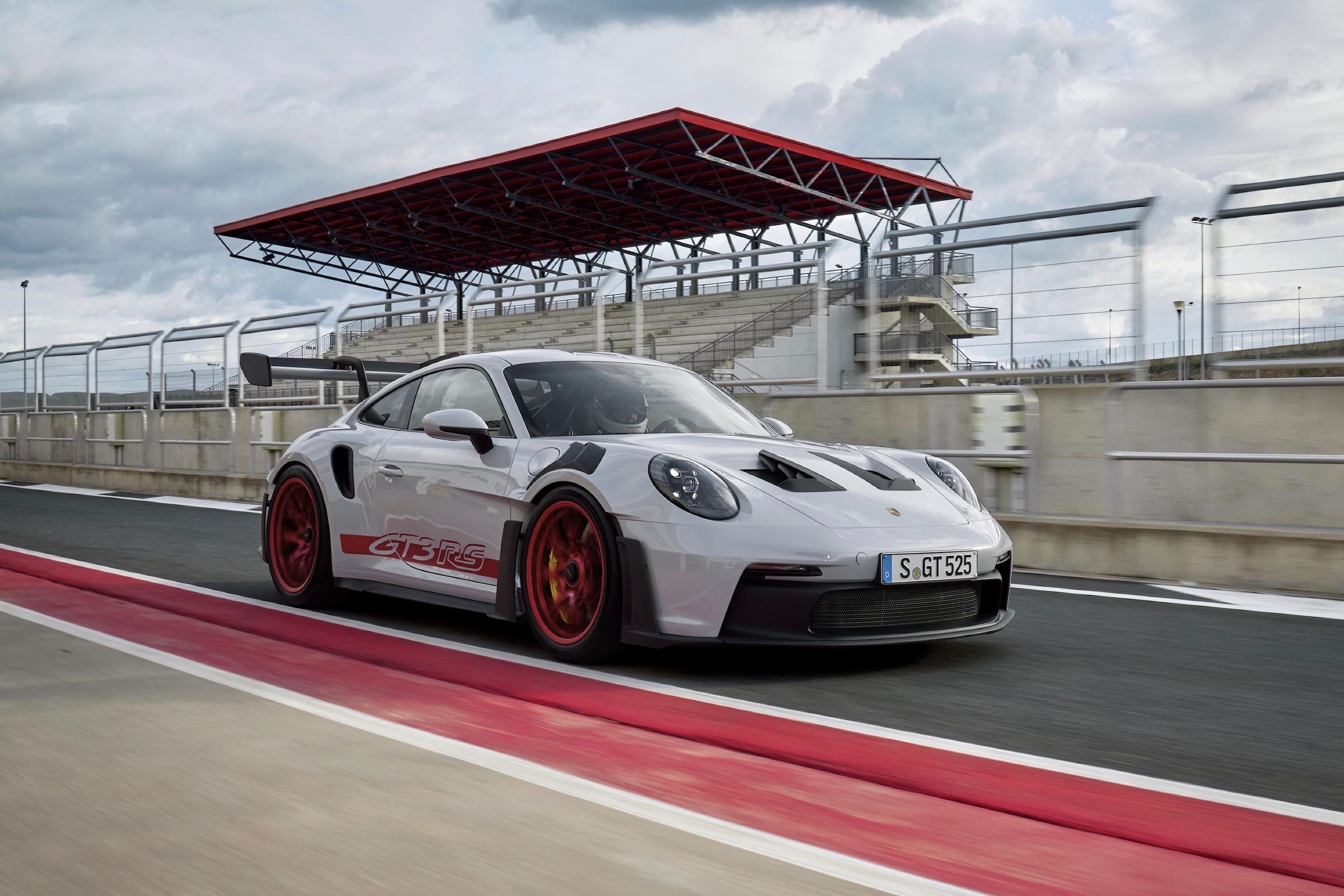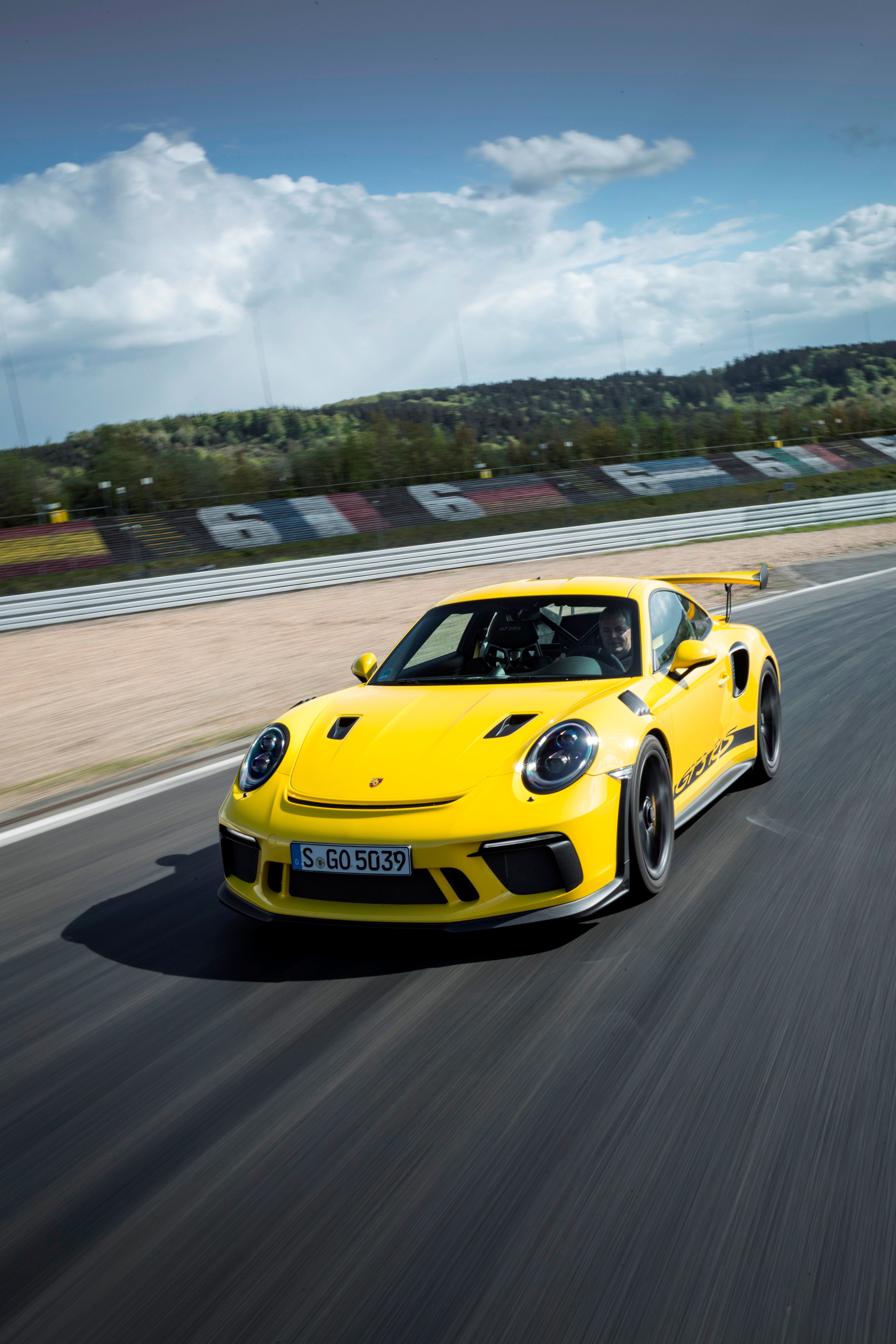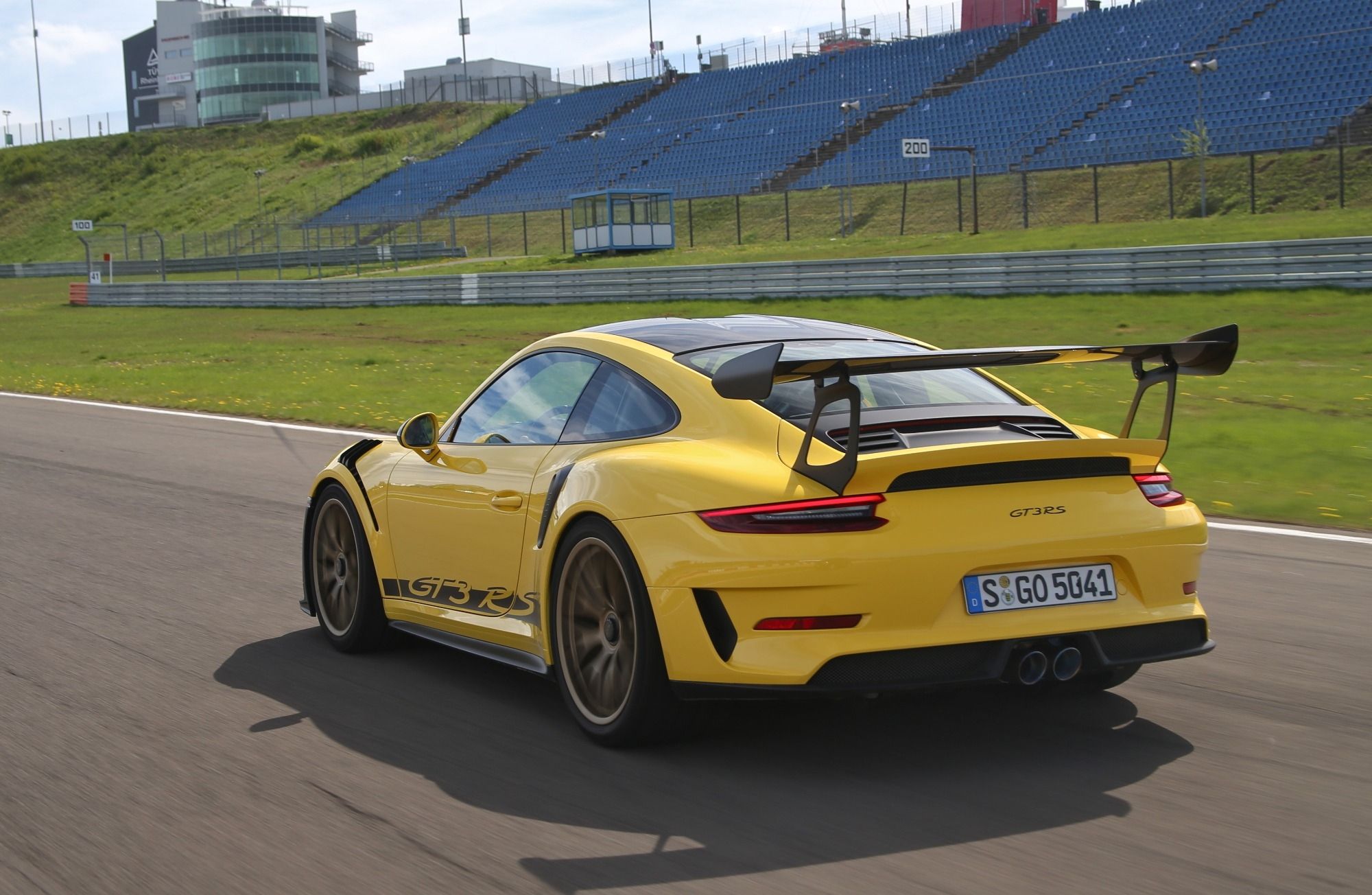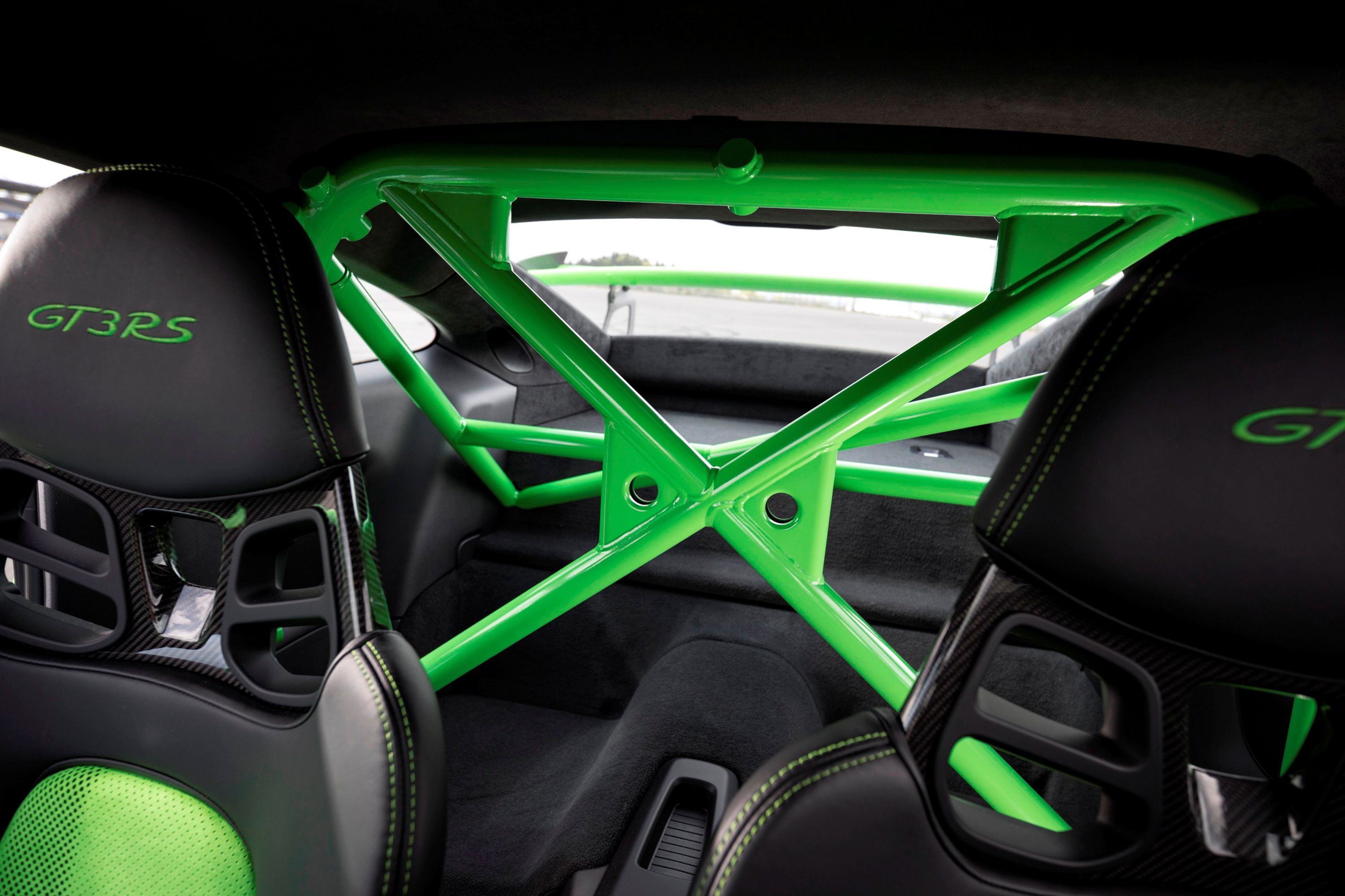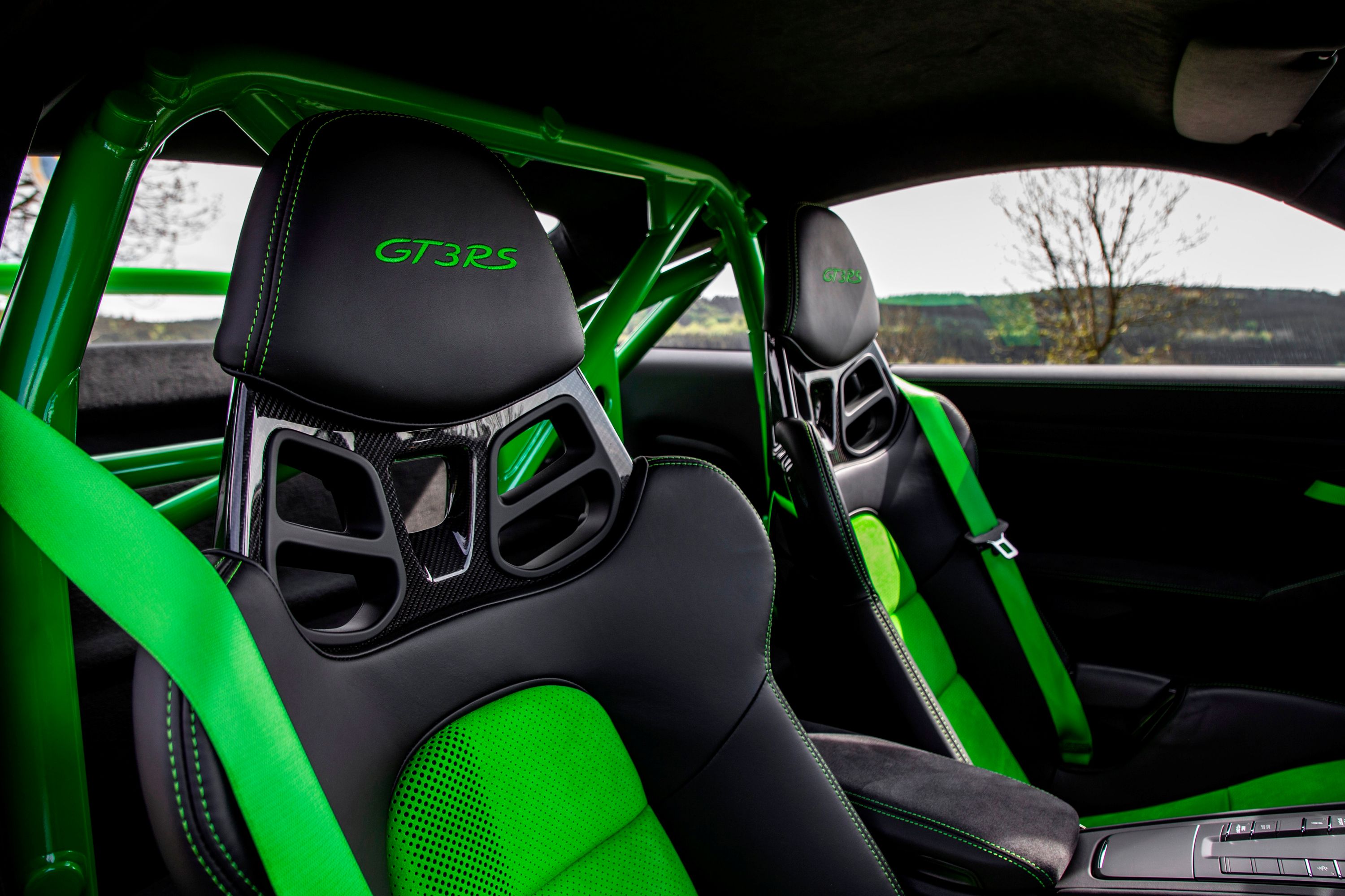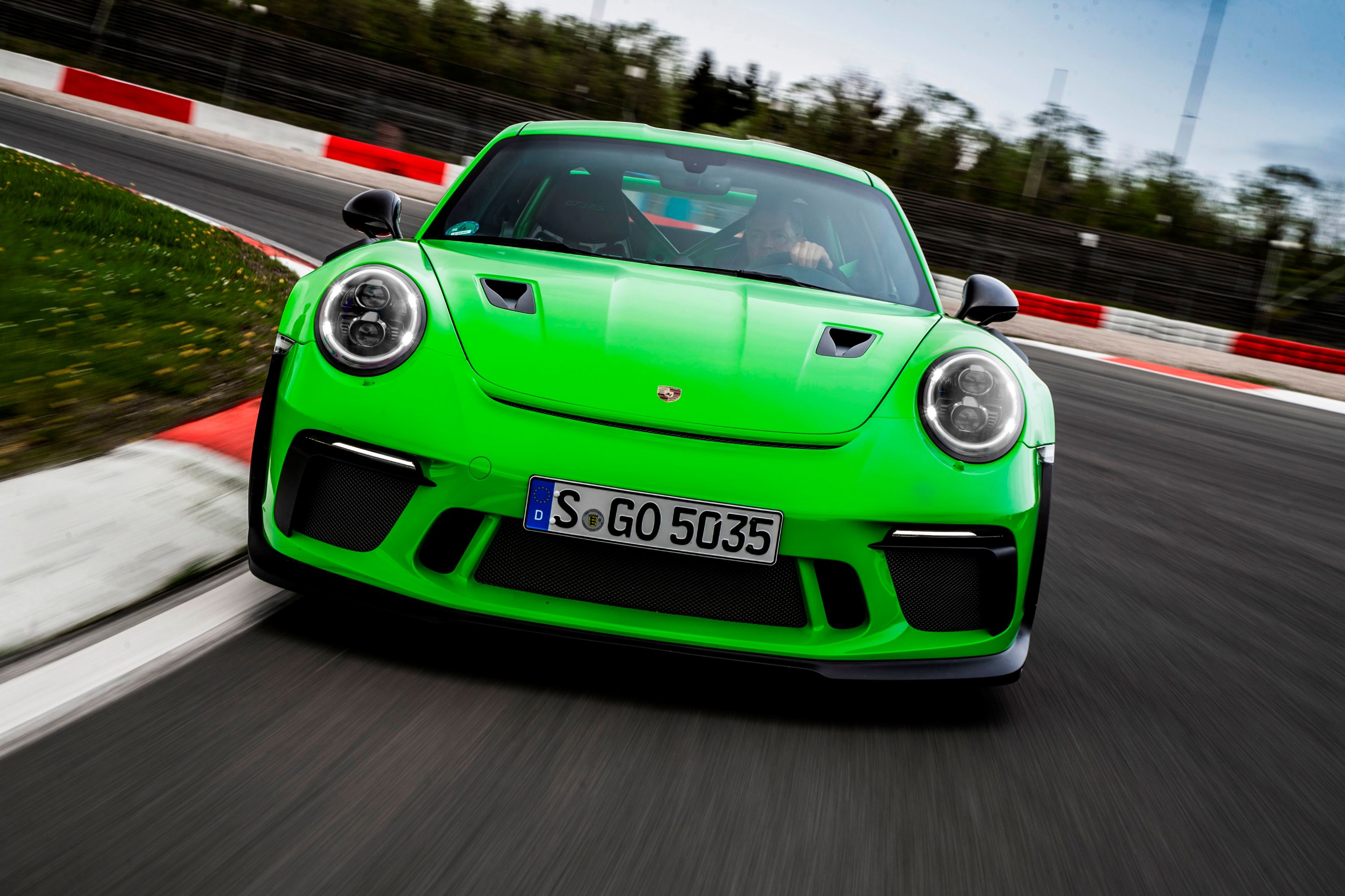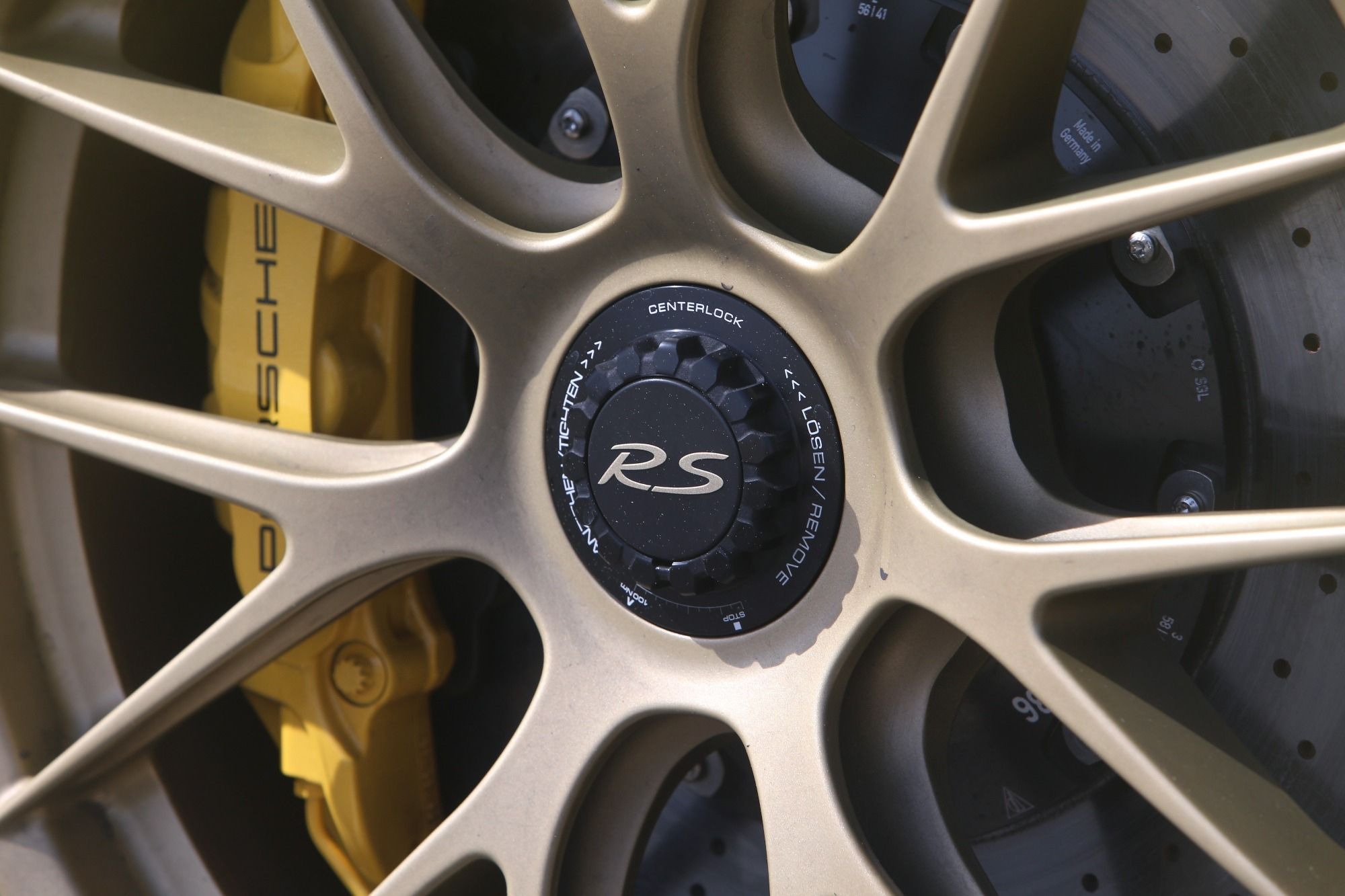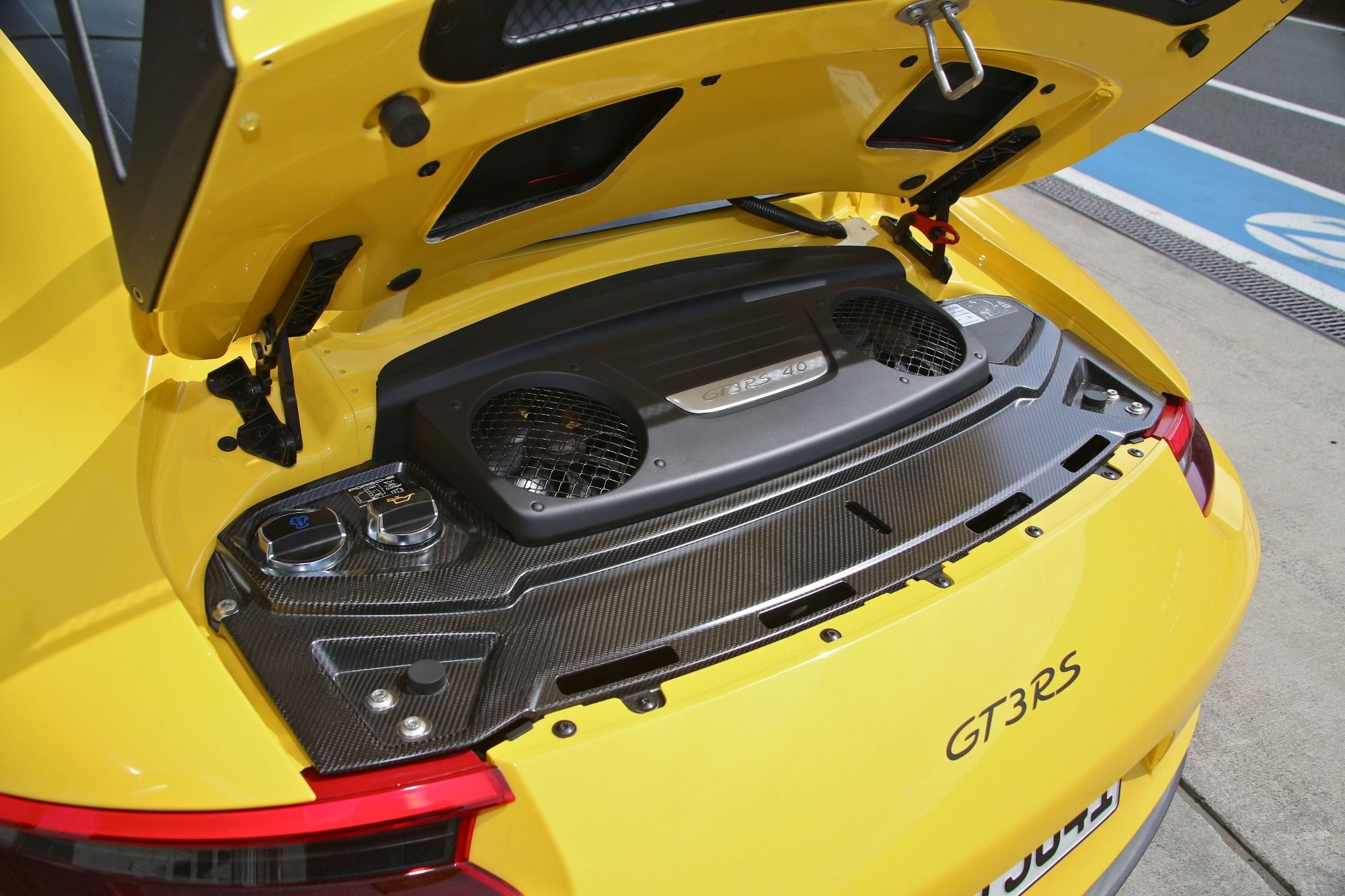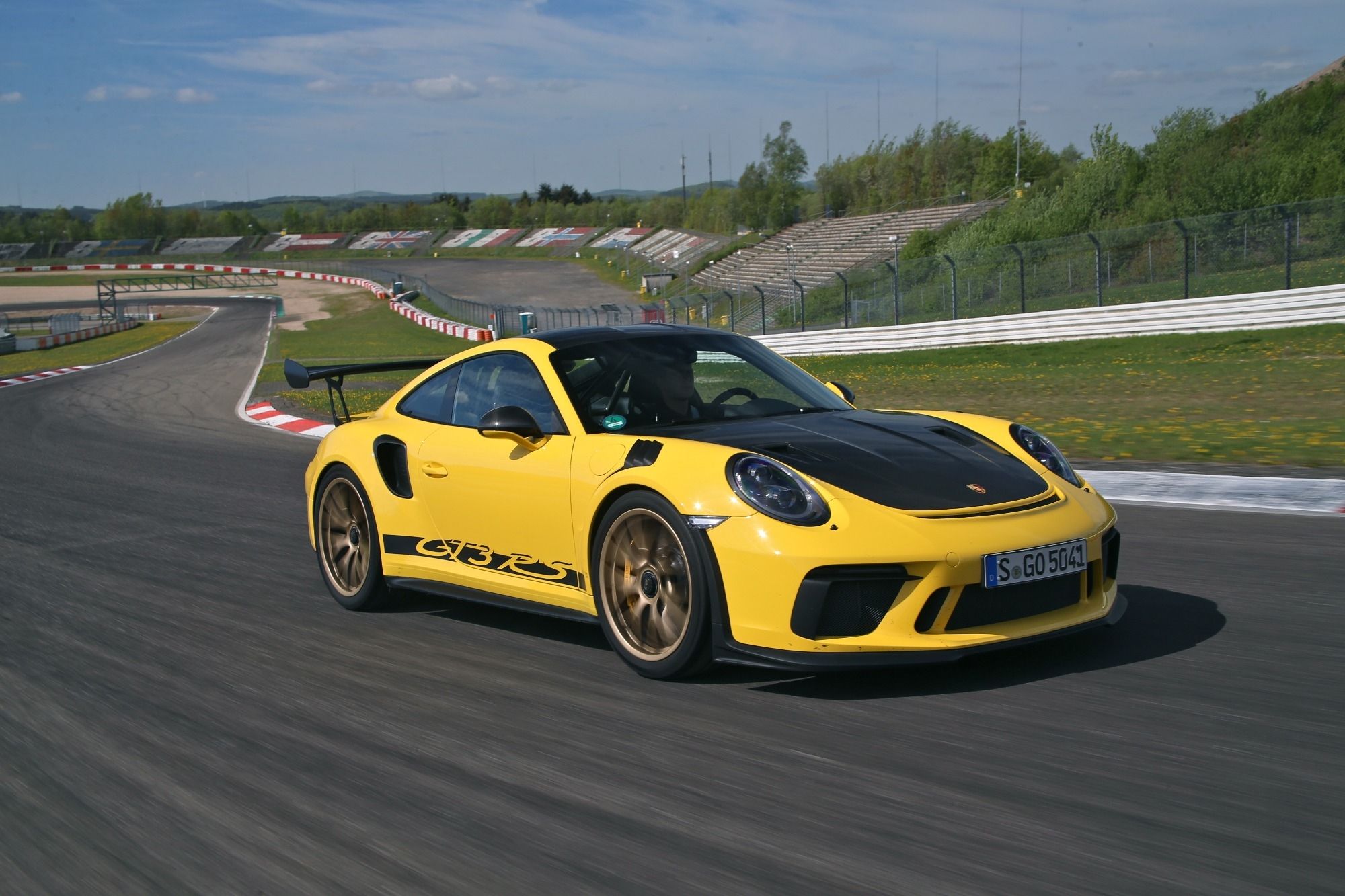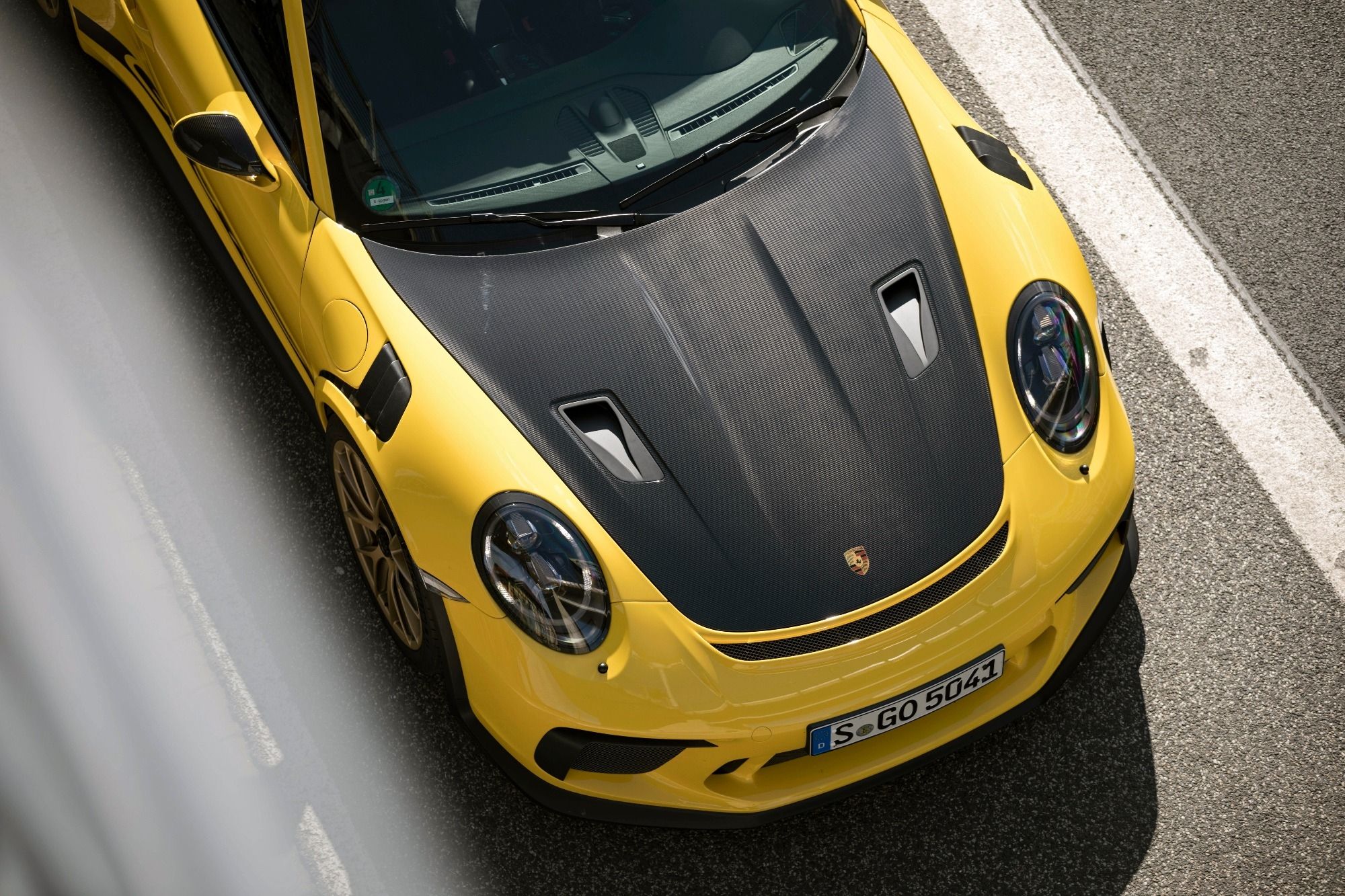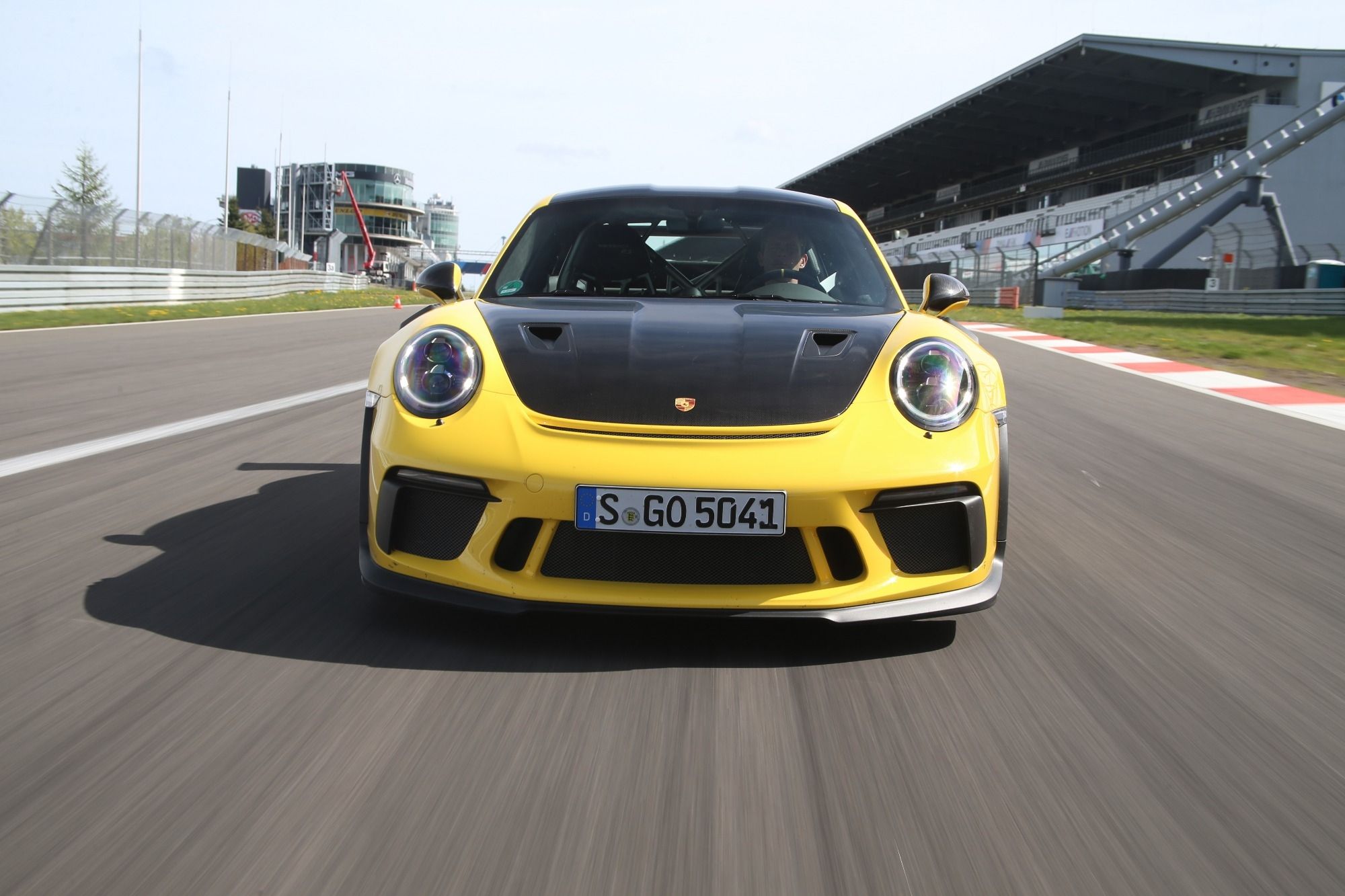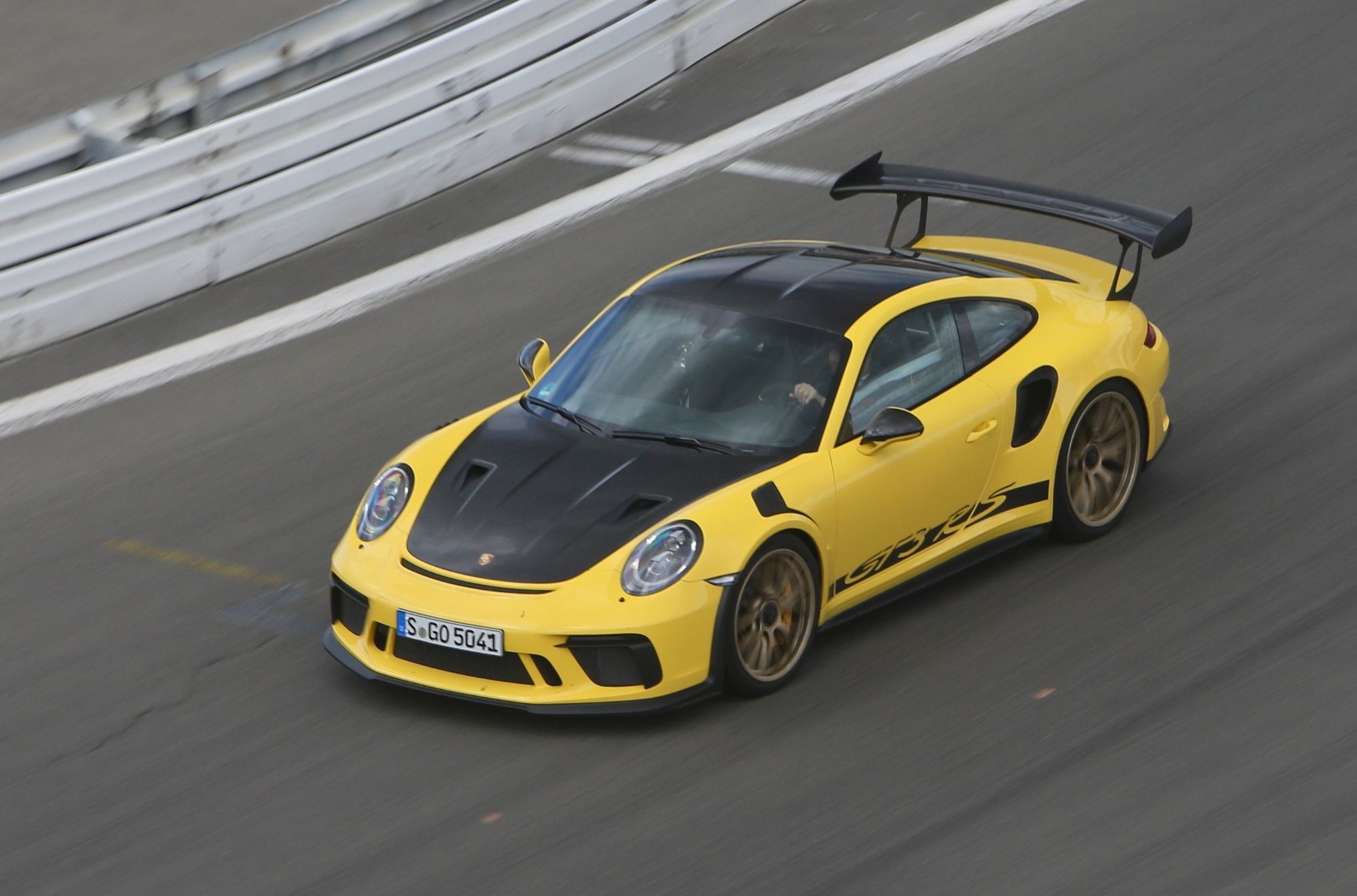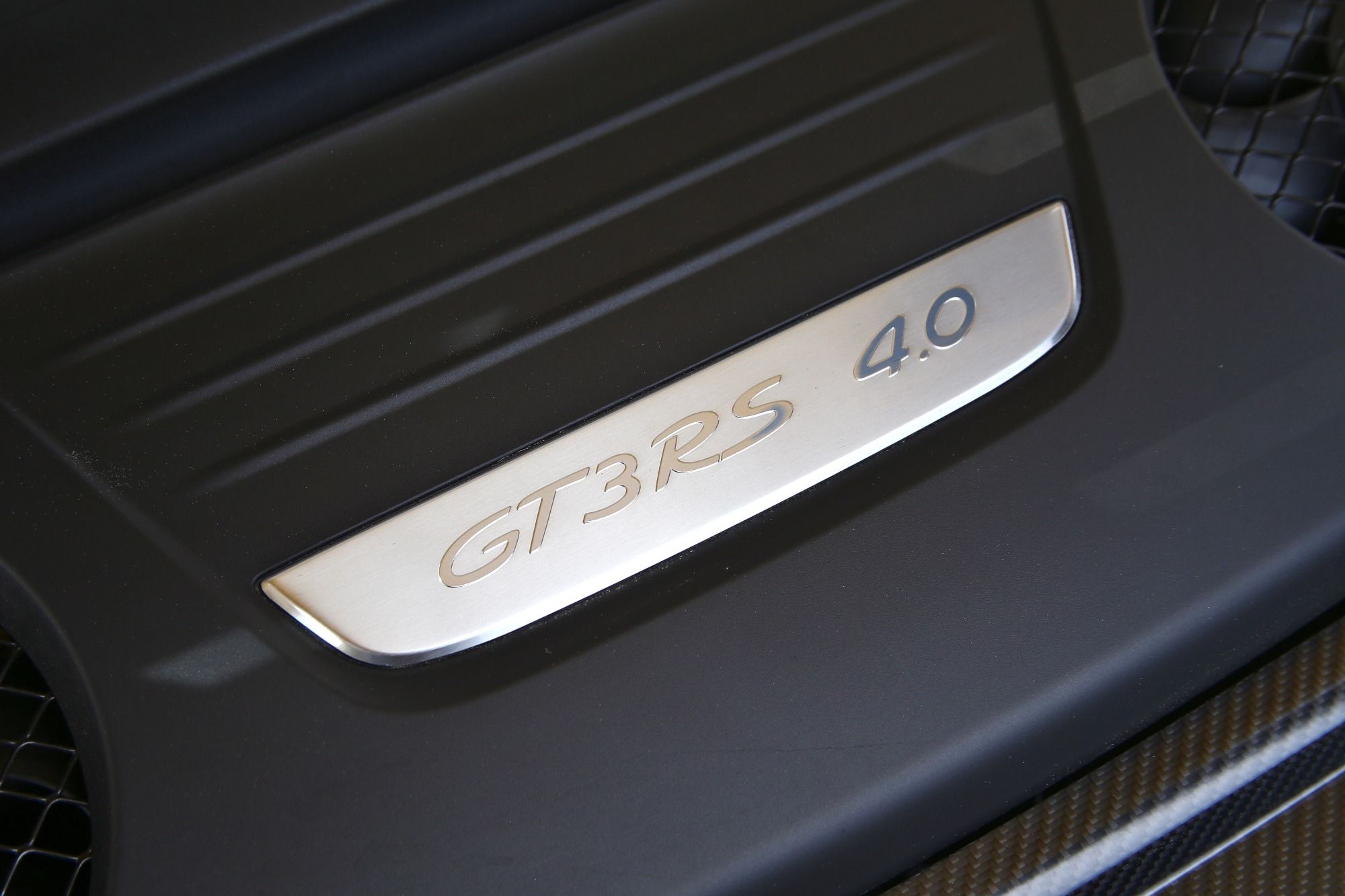2019 Porsche 911 GT3 RS First Drive Review: Another Huge Leap Forward
Only eight street legal production cars have broken the 7.0 minute benchmark on the Nurburgring Nordschleife. Three of these are Porsches. The 918 Spyder did a 6:57 back in 2013, the GT2 RS ran a sensational 6:47.3 lap late last year, and now the GT3 RS has clocked 6:56.4 min, an amazing lap time for a naturally aspirated 911. Significantly, the 996 GT3 RS of 2003 was the first model worked on by Andreas Preuninger, now Director of GT cars at Porsche. Back then, its 7:48 min lap time set by Walter Rohrl was pretty rapid.
By 2011 the 997 GT3 RS 4.0 had reduced that time to 7.27 min, 6.0 sec faster than the Carrera GT of 2004, and by 2015, the first generation 991 GT3 RS recorded 7:20 min. The 6:56.4 min lap clocked by Kevin Estre shows a massive leap in performance of over 24 seconds in just three years, with nearly 36 seconds shaved off the world's most famous 20.6 km long lap in three generations of GT3 RS. "Our computer simulations gave us expectations of around a 6:58 min lap at best," recalls Uwe Braun, Manager Motorsport GT Line. "We had a small team of five engineers, five mechanics and two drivers at the 'Ring. Lars Kern, our works driver who set the GT2 RS record last year did two laps at 6:59.3 and 6:57.5.
Then Kevin came on board and did a 6:57.7 min lap followed by the record breaking 6:56.4 sec lap." These numbers were prominent in my mind as I ventured onto the Nurburgring GP Circuit, a modern, quite technical track with a very grippy surface that is far less forbidding than the Nordschleife next door that is famously used by the industry to benchmark fast cars. A few significant numbers first. The new GT3 RS weighs 1,420 kg and its 4.0-liter naturally aspirated flat-six motor develops 520 hp at 8,250 rpm with a 9,000 rpm limit. Peak torque is 347 lb-ft at 6,000 rpm, but the torque curve is actually quite beefy below that, so you can go very quickly even when you limit yourself to helpings of go under 6,000 revs.
By any standards a car that can blast to 62 mph in 3.2 seconds, pass 100 mph in 6.9 sec, 124 mph in 10.6 sec and that can top out at 194 mph is very rapid, but as the GT3 RS is a track-biased road car I was curious to see how it would stack up against the 580-hp 4WD 911 Turbo S driven by Porsche works driver, Jens Richter. The answer was very well indeed. From the first lap it was clear that the more powerful Turbo S benefitted from its superior traction and torque coming out of bends and also at the end of a long straight. It was equally clear that the 200-kg heavier Turbo S could be reeled in under braking, using the full might of the huge stoppers adopted from the faster and heavier 918 Spyder.
The Turbo was also at a disadvantage in sheer mechanical grip in bends where its 4WD system gave it no edge. In addition, its street tires started to wilt after a couple of laps, forcing the driver to manage the car more and more with each passing lap, while the Michelin Cup 2 tires on the GT3 RS only got better. This, and the huge amount of downforce from the revised aero package, meant I could trail brake the GT3 RS deep into turns, confident of the grippy front end and fine real balance, and then get back on the sharp throttle to manage the cars attitude past the apex. After lap three I had to hang back a bit from applying the throttle too early past the apex or I would have driven into the back of the Turbo S.
This is exactly how much better the GT3 RS is in technical sequences of bends compared to the mighty 911 non-GT flagship. On full noise throttle, response of the 4.0-liter flat-six is simply electric. And being naturally aspirated you can almost hear every 100 rpm you add to the rev counter as its needle soars towards the 9,000 rpm limiter in each gear. The soundtrack is akin to a deep buzz saw that goes up in octaves as the engine chases the redline. The seat of your pants is the best judge, and the GT3 RS is one of those cars that you feel you are strapping on rather than merely sitting in when you drop into the deep bucket sports seat. You can have the plain vanilla GT3 RS, a Clubsport package that brings a steel half rollcage and fire extinguisher.
Or push the boat out and order the Weissach Package as many GT2 RS buyers have. This includes many lightweight niceties such as a titanium bolt-in roll cage, carbon-fiber hood and roof panels, magnesium alloy wheels, a carbon-fiber rear anti-roll bar, and even carbon-fiber paddle shifters. Interestingly, the standard roof is made from magnesium, and the carbon-fiber equivalent saves just 500g ), but looks good in combination with the hood. The interior is similar to the GT2 RS, but where the Weissach Package for the turbocharged car is a red that does not suit every exterior color, the GT3 RS WP has the choice of green and a non-controversial graphite grey interior.
"The 997 GT2 RS offered red as an interior roof trim option and the take-up rate was 40%, which is why we offered it on the new GT2 RS," said Oliver. The air-conditioning delete option saves another 14 kg, but is not recommended if you ever wish to sell the car. "Out of the 5,000 first generation 991 GT3 RS cars we made, only 20 owners ticked the box for a/c delete," said Oliver. "It might sound good on paper but the discomfort you will experience when wearing a race suit and helmet on track in summer is simply not worth it. You will likely be slower just because you cannot concentrate as well compared to when you are cool and comfortable."
In fact the take-up rate for the GT2 RS Weissach Package has been so great that GT3 RS owners who want the same are being stalled by the relatively slow production rate of the magnesium alloy wheels. Uwe Braun, Manager, Complete Vehicle Motorsport GT Model Line, explained the standard forged aluminium wheels and the optional magnesium wheels are identical to those of the GT2 RS, which means center lock wheels of 9.5J x 20-inch in front and 12.5J x 21-inch at the rear, shod with the same 265/35ZR20 and 325/30ZR21 Michelin Cup 2 tires. These wheels are made by BBS and the magnesium option saves a significant 12 kg per set.
The changes that help the GT3 RS engine (internally known as the 9A1 MA177 variant) develop its extra 20 hp and 7.4 lb-ft of torque over the GT3, stem from the ram air intake system and slight changes to the timing of the variable camshafts that make full use of the extra air. Like their race engine counterparts these high revving engines feature solid lifters with tappet clearances set at the factory for life. The exhaust system is also identical to the GT3's apart from the two exit pipes, which are a slightly larger 98-mm diameter for visual reasons. "The extra torque is not at any one point but is instead a move upwards of the whole torque curve to compensate for the greater aerodynamic downforce," Thomas explained.
"The ECU mapping is also aimed at delivering even better throttle response and perceived 'punch' in line with the RS's role. In the GT3 family philosophy, the track-biased RS sits in the opposite corner to the GT3 Touring, which is a manual gearbox only road-biased model." Oliver Berg explained that the GT2 RS and GT3 RS share the same bodyshell, but where the rear wheelarch intakes direct ram air to the intercoolers of the former, they send air to the intake system of the naturally aspirated car. "This a more effective system than the previous GT3 RS models which had ram intake scoops on the engine cover lid," says Oliver. "The side intakes enhance the air velocity and we can get an additional 25 to 30 hp over the rated 520 hp output at 186 mph.
The effect of all these incrementally improved parts is 40% more downforce than the old car, and the solid bushes in the suspension and various lightweight components make for a driving machine that talks to you and stirs up genuine excitement. The electric steering is superb, and at the other end of the car you really don't realise that the rear wheel steering is there, so progressively and seamlessly does it help you turn into a bend and stabilise the car. In fact it has got to the point where you can no longer tell that the GT3 RS has its engine in the rear. Except of course when that extra weight over the driven wheels is helping you exit a bend faster than any front engine rear drive or mid-engine car can manage.
You can talk about engine power, PDK shifting speeds, aerodynamic downforce and lower drag. You can also talk about rear wheel steering, better tires and lightweight components. But the ultimate reason that the new Porsche GT3 RS is so fast and user friendly is the perfect mix and balance of components and how they interact with one another. This is neatly summed up by Andreas Preuninger sage words that his team has made "11,000 parts feel like one." That in a nutshell is what the best and fastest naturally aspirated 911 ever is like to drive.

